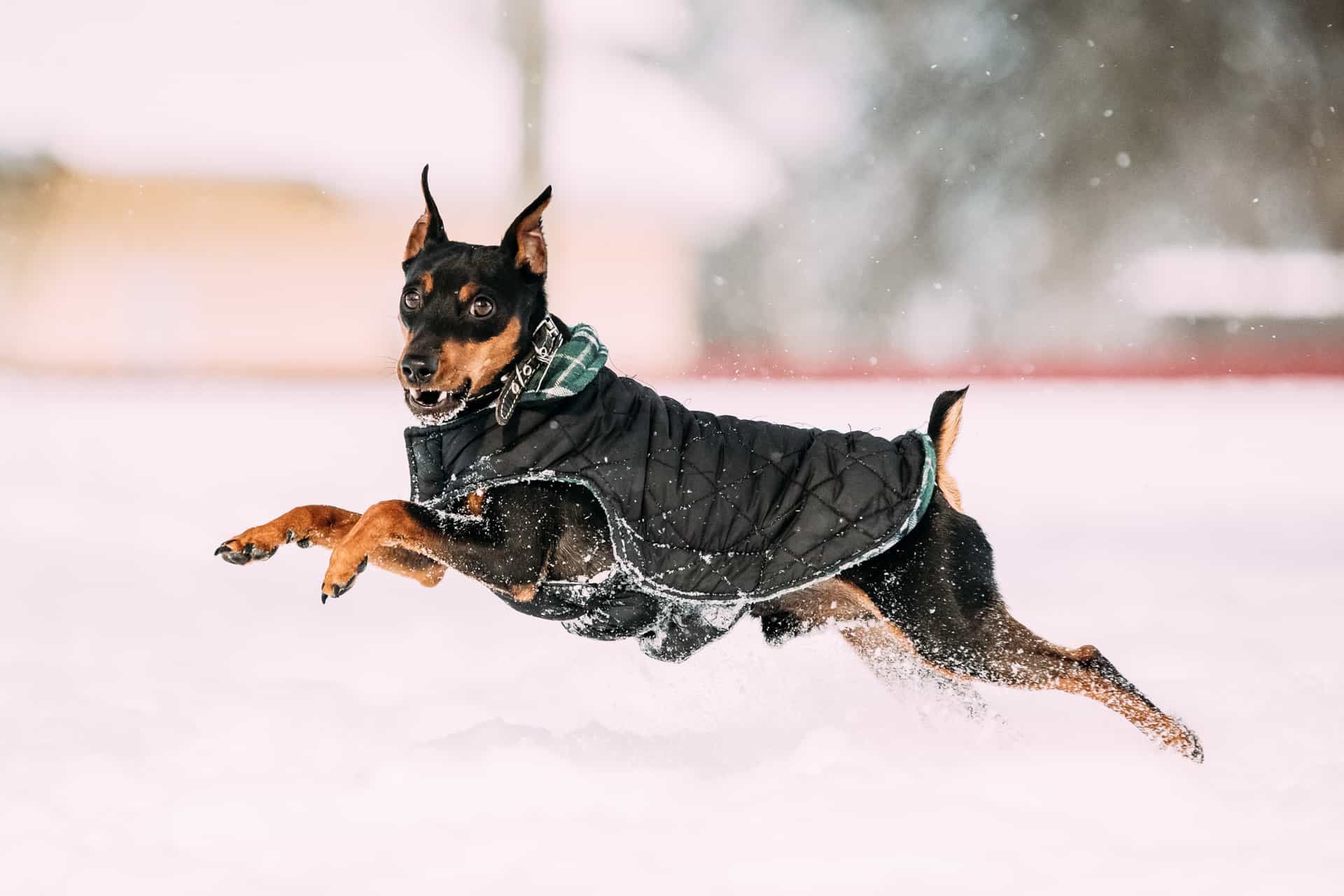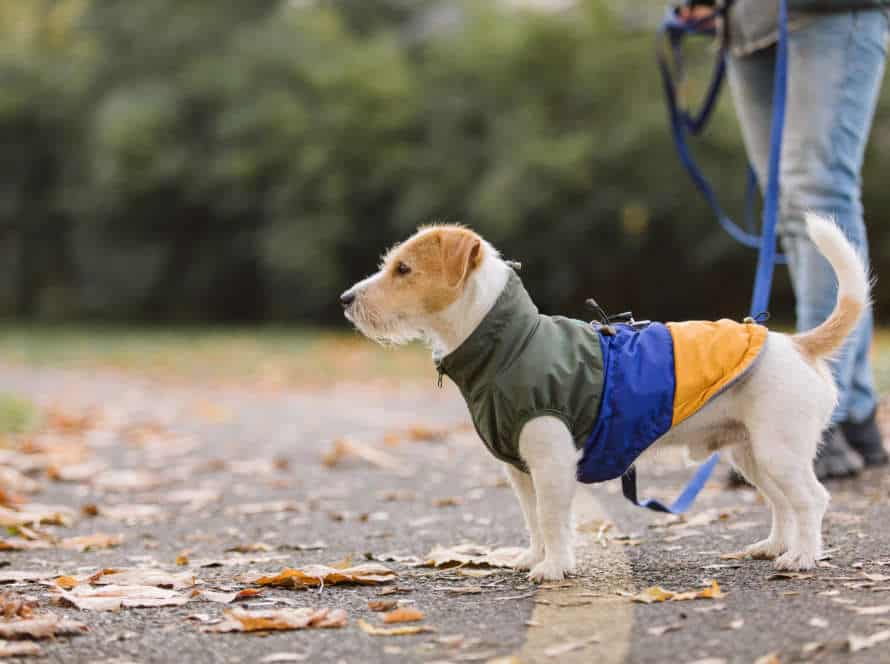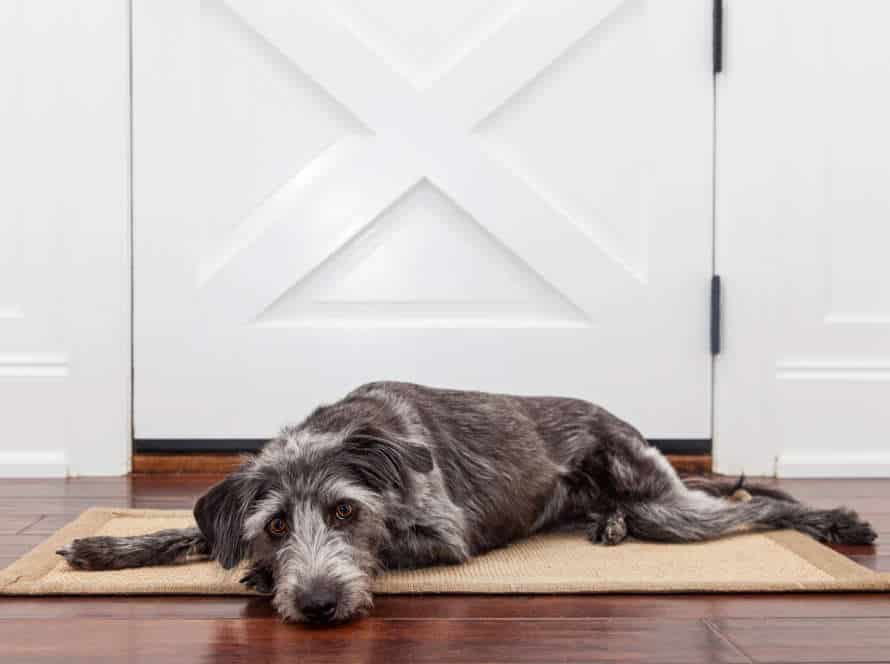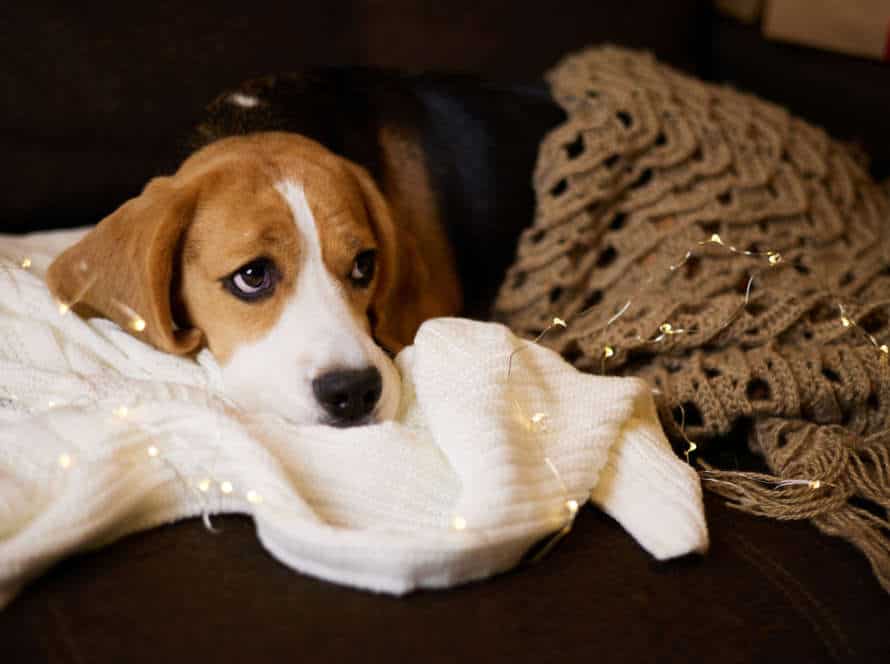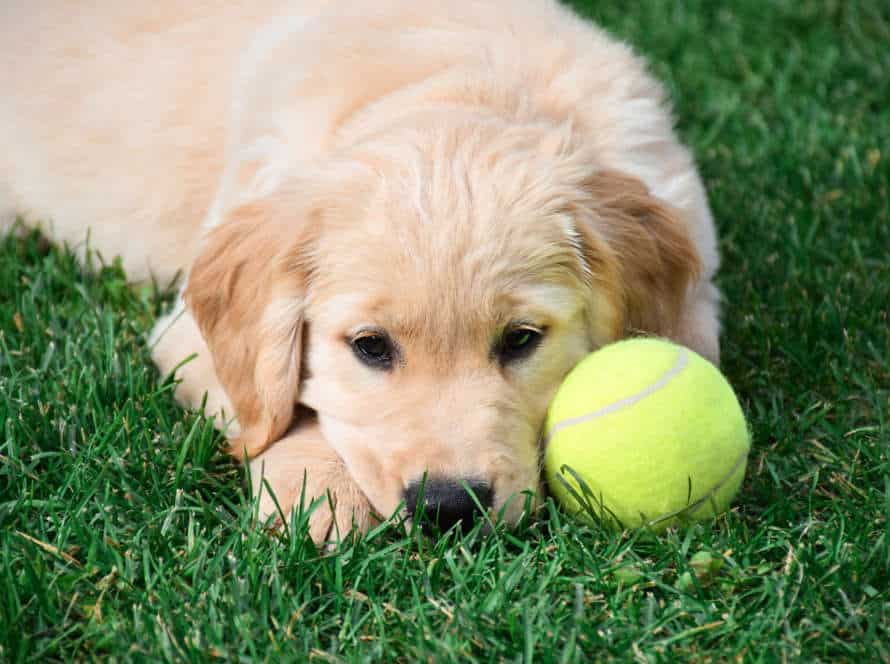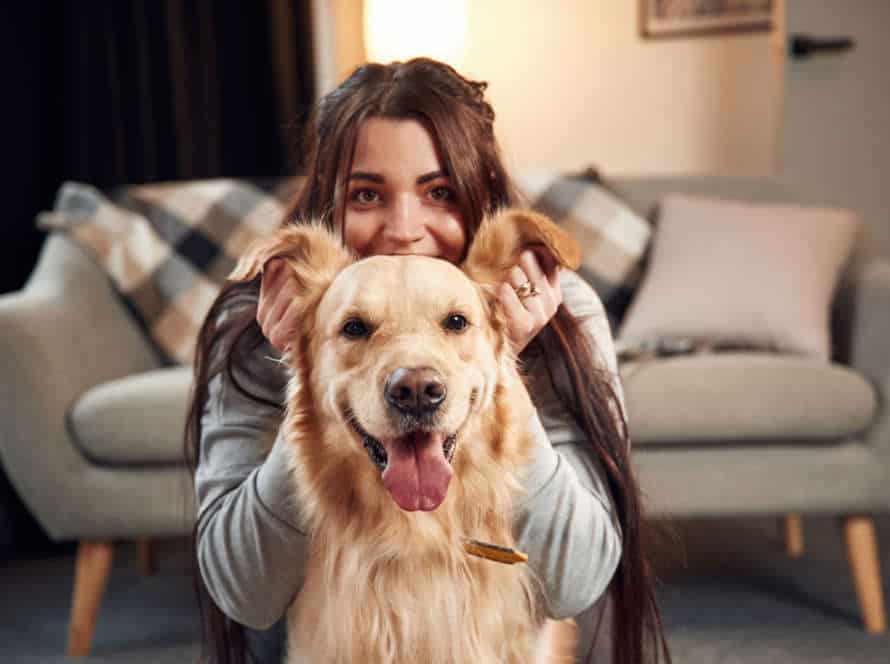Using Toys and Treats to Redirect Jumping Behavior
Redirecting your pup’s jumping behavior using toys and treats? Here are some tips to help:
- Keep a toy or treat ready. Whenever you’re together, have a toy or treat in hand – this will shift their focus.
- Teach other behaviors. Teach your pup alternatives to jumping, like sitting or shaking hands.
- Be sure to praise & reward. When they exhibit the right behavior, don’t forget to praise and reward them!
- Be consistent. Everyone in the household needs to use the same approach so your pup gets it.
Understanding Jumping Behavior in Dogs
Dogs often leap up on people. This could be an expression of love, but it can get out of hand quick! To manage this, we need to figure out why they do it. We will explore the reasons and give tips on how to use toys and snacks to change the behavior.
Reasons why dogs jump
Dogs jump for many reasons. Knowing why is key to curbing the behavior. Here are some common causes:
- Greeting: To show love and affection, dogs often jump up to their owners or others.
- Play: To engage with their owners or other dogs, jumping can be a part of their play.
- Attention: Dogs may jump for attention if they feel ignored.
- Energy: Out of excitement, anxiety or pent-up energy, jumping may happen.
To control jumping, owners can use positive reinforcement. Treats or toys for desirable behaviors like sitting or lying down can help. Exercise and training are also important tools to keep the relationship with their pet strong.
Risks of jumping behavior
Jumping poses risks to both dogs and humans, so it’s important to redirect this behavior with toys and treats.
Examples of risks include:
- Injury to people – especially children and elderly who may be knocked over.
- Injury to dogs – they could jump off high surfaces and get hurt.
- Damaged property – like torn clothing, scratched surfaces, and broken objects.
Redirect jumping with toys and treats to minimize these risks. Pro tip: Teach your dog to sit or stay when they meet people. Reinforce this positive behavior with treats and praises.
Addressing jumping behavior
Dogs often jump but when it’s directed at people or causes damage to things, it’s a problem. To tackle this, use toys and treats to understand and redirect the behaviour. Here are some tips:
- Give your pup a toy or chew when they jump, to focus away from you.
- Teach commands like ‘sit’ and ‘stay’ to stop jumping from becoming a greeting.
- Reward good behavior with treats and praise.
- Don’t give attention when they jump, avoid encouraging it.
Redirecting jumping needs patience and consistency. Be proactive and redirect their focus to create a better relationship.
Redirecting Dog Behavior Using Toys and Treats
If your pup is jumping up on people or objects, try redirecting their behavior. Use toys and treats to motivate them. This takes advantage of the pup’s natural desires. Offer an acceptable alternative and reward them when they obey. This way, you can reduce undesired jumping.
Identifying appropriate toys and treats
Redirecting a pup’s behaviour with toys and treats can help eliminate undesired behaviours like jumping. Here are some tips for the correct toys and treats:
Toys: Pick toys that are long-lasting and safe for the dog to chew and play with, like rope toys, chew toys, and rubber toys. Take size into consideration. Offer various toys to keep the pup engaged.
Treats: Choose treats made for dogs, avoiding any with bad ingredients. Opt for small and easy-to-handle treats, such as training treats or soft chews. For more difficult tasks, use high-value treats like meat or cheese.
Using the right toys and treats can make redirecting a pup’s behaviour a rewarding and fun experience!
Introducing toys and treats to redirect jumping behavior
Introducing toys and treats is a good way to stop your pup from jumping. Here’s the method:
- First, teach your dog the basics like “sit” and “stay”.
- When they jump, say “no” in a solid, but calm tone and look away from them.
- As soon as all four paws are on the ground, distract them by using the “sit” or “stay” command.
- Immediately give them a treat or toy when they do as you say.
- Do this each time until your pup links sitting or staying with rewards, not jumping.
Tip: Patience and consistency are key to this training. It could take multiple tries for your dog to stop jumping, but you’ll be left with a content and well-mannered pup.
Using positive reinforcement for long term results
Positive reinforcement is a good way to redirect dog behavior – especially jumping. Use toys and treats for the best results.
Get your dog’s attention and show them the treat or toy. Toss it away from you. When your pup lands on their feet, praise and give the treat or toy. Repeat this several times.
Later, when your pup jumps, use the same technique but without the treat/toy and say “off”. After a few weeks of practice, most dogs will stop jumping on people and drop to the ground.
Positive reinforcement takes time and patience. Eventually, your pup will learn jumping equals toys or treats. This leads to a well-behaved, happy pet!
Training Techniques to Redirect Jumping Behavior
If your furry pal loves to hop onto your guests or furniture, you must redirect it fast. Training techniques like toys and treats can be used to promote better behavior. Let’s have a peek at how these techniques can be used to change jumping habits.
Basic obedience training
Training your pup basic obedience is key for good behaviour. Redirecting jumping? No problem! Toys and treats can help. Here are some tips:
- Give rewards for good behaviour, like treats or toys.
- Teach alternative behaviours like sitting or making eye contact instead of jumping.
- Don’t use physical punishment like hitting or pushing.
- Be consistent with training, it needs time and patience.
Pro tip: Establish boundaries early to stop bad habits from forming. Consistency and positive reinforcement are great for obedience and redirecting negative behaviours.
Counter-conditioning training
Counter-conditioning training is a great way to stop your pup from jumping. Here’s how:
- Identify the triggers that make your pup jump – like visitors or when playing.
- Teach them a new behaviour, like ‘sit’ or ‘down’. Reward them with treats or praise when they obey.
- Practice the new behaviour when the trigger happens. Give rewards when they don’t jump.
- Increase the intensity of the trigger and practice the new behaviour.
- Toys and treats are useful tools to reinforce good behaviour and stop jumping.
Tip: Be consistent with everyone in the house. Don’t confuse the pup!
Desensitization training
Desensitization training is an effective way to steer jumping behavior in dogs. Use toys and treats to reward positive behavior and stop jumping. Here’s how:
- Have a toy or treat ready when your pooch jumps on you.
- Say “sit” and give the toy/treat.
- Do this regularly and increase time they remain seated before receiving the reward.
- Be consistent. With practice, your pup will know that “sit” results in a toy or treat. And they won’t jump on you or others.
Pro tip: Give healthy and easy treats.
Maintaining Progress and Addressing Regression
Progress with redirecting your pup’s jumping? Awesome! Keep up the good work. Here are some ways to do this.
- Give toys and treats as rewards for desired behavior.
- Also, strategies for dealing with any regressions that might happen.
Consistency in training
Consistency is key for training dogs. To help keep progress and fix any regression, use toys and treats to redirect jumping.
For consistent training, you must:
- Set achievable goals.
- Be the same with commands, rewards, and consequences.
- Be patient and reward good behavior right away.
To address jumping, distract them with a toy or treat. Reward the dog for engaging with it instead of jumping. Eventually, they’ll learn that desired behavior earns a reward, and jumping only gets redirected.
Setting achievable goals
Achieving goals is a great way to keep going and not backslide. For jumping behavior, here are some tips to help you set achievable goals:
- Start small – Begin with simple commands like “sit” or “stay”. Then move on to harder ones, like “roll over”.
- Be precise – Be exact with the behavior you want. Use clear language.
- Be realistic – Set goals that your pup can actually do, according to their current training level. Don’t set something they can’t do – it’ll just make them frustrated!
- Reward progress – Give praise and treats when they do right. It’ll help make positive habits stick.
Pro tip: Keep up a routine and be consistent. Don’t give your pup mixed signals. With patience and commitment, you can help your pup stop jumping and stay on track!
Seeking professional help if needed
When it comes to keeping progress and dealing with regression in a dog’s jumping behavior, getting professional help is vital. Toys and treats are useful for diverting a dog’s focus, but they may not always sort out the underlying problem causing the jumping.
A qualified dog trainer or behaviorist can evaluate the situation, recognize the main source of the jumping conduct, and give tailored answers for your pet. They might also advise obedience training and behavior change methods to address the issue in the long term.
It’s essential to get expert help to guarantee that your dog’s jumping behavior doesn’t get worse and become a perilous or persistent issue. Don’t delay to contact an expert for support if you’re battling to manage your dog’s behavior alone.
Frequently Asked Questions
Q: How can toys and treats help redirect my dog’s jumping behavior?
A: Toys and treats can serve as positive reinforcement for your dog when they exhibit good behavior. By redirecting your dog’s attention to a toy or treat they enjoy, you can distract them from jumping and also reinforce the desired behavior of staying on the ground.
Q: Is it ok to give my dog treats every time they jump?
A: No, it’s important to only give treats when your dog exhibits the desired behavior of staying on the ground. If you give treats every time they jump, you may inadvertently reinforce the jumping behavior instead of redirecting it.
Q: What type of toys should I use to redirect jumping behavior?
A: Toys that can be thrown or tossed are great options, such as balls or frisbees. Interactive toys that require your dog to work for a treat, such as puzzle toys, can also be effective in redirecting your dog’s attention and energy.
Q: How long will it take for my dog to learn not to jump?
A: The time it takes for your dog to learn depends on various factors such as age, breed, and prior training. It’s important to be consistent with redirecting your dog’s behavior and rewarding good behavior, which can help expedite the learning process.
Q: Can using toys and treats to redirect jumping behavior be used for all dogs?
A: Yes, this positive reinforcement technique can be effective for all types of dogs. However, it’s important to adjust the toys and treats to your dog’s personality and training level.

